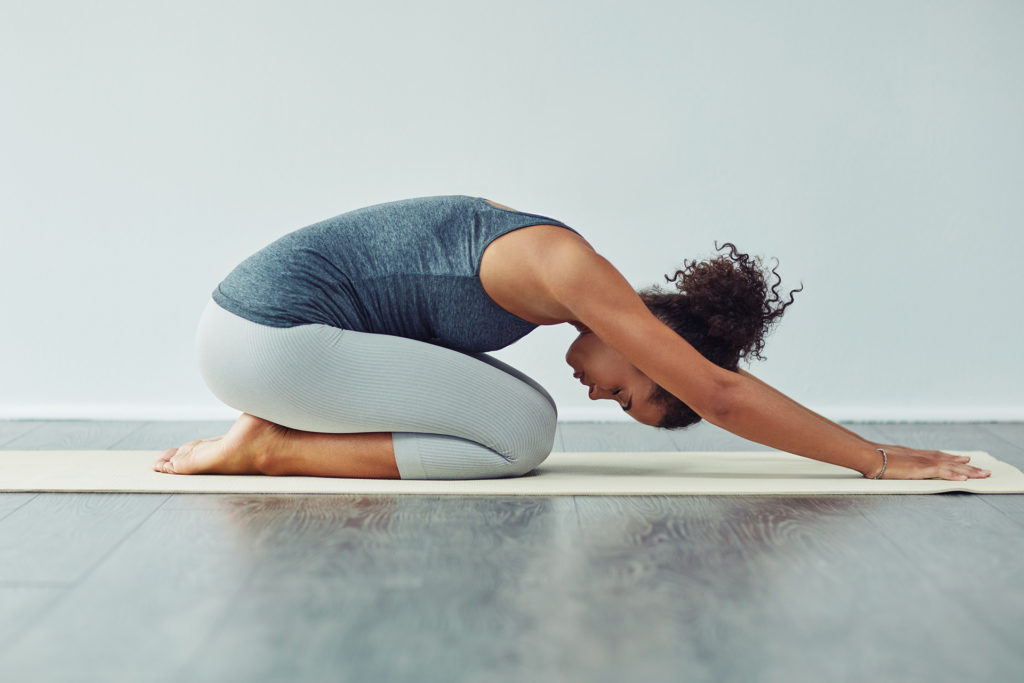Ease Aches & Pains Working From Home

It’s one thing answering a few emails or browsing on the sofa in the evening. It’s another thing altogether spending 7 hours or more typing and mousing furiously on your laptop!
So how can you make your home workstation the most comfortable it can be, and stave off sore backs, necks and shoulders?
Check Your Posture
Start work – then stop, and notice how you’re sitting. Hunched forward, neck sticking out, shoulders scrunched up?
You may just need to relax – or to adjust the height of your desk and chair. Your forearms should rest comfortably flat on the desktop, and you should be able to see the screen while looking straight ahead, not down.
Laptops really aren’t ideal for this! So pile pillows on your chair, and/or perch your laptop on box files or large books, until you’re more aligned and comfortable.
Invest in a good back support that fastens to your chair, or improvise one with a rolled-up jumper or towel. This will help you “maintain your lordosis” as physiotherapists say.
The Optimum Position
A work desk is best near daylight, but without any glare – avoid light directly on the screen, behind the screen making you squint, or even a brightly lit you reflected in the screen.
So you may end up sitting by a window with the curtain or blind partly drawn, and having to get up at intervals during the day to adjust it – though of course this is good (see below).
That Elusive Signal
Unless you’re in a city centre, or a building less than 10 years old, you may be at the mercy of your wi-fi. A colleague mentioned in passing that she is having to work from her bed, as that’s the only place she can get a reliable signal!
There are two ways round this during lockdown:
- rearrange your furniture (mind your back while doing that, too)
- order a wi-fi booster, online or from your telecomms provider.
Are You Warm Enough?
The commonest complaint among friends working from home is how much colder they feel. No wonder – an open plan office typically has dozens of computers blowing out hot, dry air. (You may joke about colleagues doing the same – definitely not on My Weekly, which is an oasis of laughter and lively chat!)
Warm air can make you drowsy, though, and of course it costs to crank up the heating. So it’s best to use that as a last resort – first, dig out your hot water bottle, blankets, shawls and cosy slippers and snuggle down. With the cat, if you have one.
Also make the effort to get up regularly and brew a warming cuppa – just as you would in the office!
Get Up And Stretch
Without the buzz of the office, or with the added stress of remote desktops, it’s easy to stay hunched over your screen for an hour or more – and many WFH people are reporting sore backs, necks and shoulders they didn’t have when working from HQ.
Set an alarm for every hour or half hour and make a point of standing up to stretch, re-focus your eyes, and breathe deeply. There are some great exercises below.
Easing The Pain
So we didn’t publish this on Day 1 of lockdown and your pain has set in? The experts at cold therapy brand Biofreeze offer tips on how to ease back pain for those who might be suffering…
- Daily yoga. It’s a great way to stretch muscles and improve overall posture, and can ease tension in a lot of problem areas. Not only is it beneficial for your muscles, it’s also a good way to relax. Find simple routines to suit you on YouTube.
- Acupressure. It’s like acupuncture, without needles – and yes, you can do it on yourself.
- Cold therapy products. These aren’t designed to freeze the area. They’re simply designed to override pain signals in the body by stimulating the cold receptors in the skin. Effectively they trick the brain into feeling cold sensations on the skin as opposed to the pain.
- Apply a pain-relief cream. Over-the-counter pain-relief creams that contain ibuprofen work by reducing inflammation, ultimately helping to lessen the pain. Important: you cannot use these gels at the same time as ibuprofen pills – only use one or the other.
- Avoid triggers. Don’t do anything to trigger or aggravate your back pain. Avoid lifting heavy items, or ensure that you lift correctly by bending at the knees while keeping your back straight, allowing your legs to do all the work. Also avoid doing anything that requires you to twist from the waist up, bend over, and even sitting down and getting up often.
- Work on your posture. Many of us don’t realise just how bad our posture can be. But sitting at our laptops, slouching on the sofa to watch TV, even walking down the road, head down, can all ultimately cause you back problems.
It’s important to stretch
It may well be the last thing you want to do when your back is suffering, but stretching helps loosen the muscles and can really help with any pain or discomfort you might be experiencing.
A few stretches include:
1. Chin to chest, ear to shoulder. Standing tall, gently bend your head forwards until your chin meets your chest and you can feel the stretch in the back of your neck. The next set involves the same principle as before, but this time bending your neck to one side to feel the stretch in the side of your neck, before doing the same on the other side.
2. Back flexion stretch. Lie on your back and pull both of your knees into your chest, while flexing your head forward at the time same. The aim is to feel a comfortable stretch across your mid and low back.
3. Kneeling lunge stretch. You need to be on your knees for this stretch, and focus on one leg at a time. Firstly, move one leg forward so that your foot is flat on the ground, place your hands on the tops of your thighs and gently lean forwards. You should feel a stretch in the front of the opposing leg.
4. Knee to chest stretch. Lying on your back once more, bend your knees and place both heels on the floor. From here you want to position both hands behind one knee and slowly pull it towards your chest. The stretch should be felt in and around your buttock muscles, but don’t forget to take each leg in turn.
5. Child’s pose. A popular yoga move, great for stretching out your back. Starting out on all fours, sit back on your heels while reaching your arms out in front of you, feeling a stretch in your back. Once you feel the stretch, hold the position for 10 seconds, repeating a few more times.
6. Cat-Camel back stretch. On all fours, arch your back towards the ceiling and holding for five seconds. Then dip your back towards the ground and hold again for five seconds, before repeating.
If you suffer regularly, you need to be doing back exercises and stretches at least twice a week. You may need to do them for a few days before you see improvements, so do persevere and hopefully you will feel the benefits soon.









